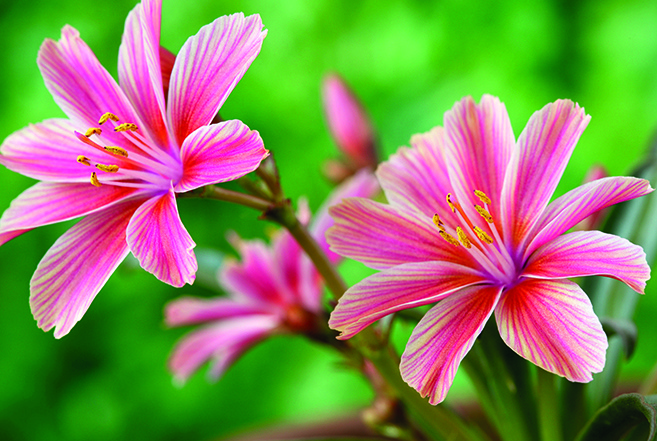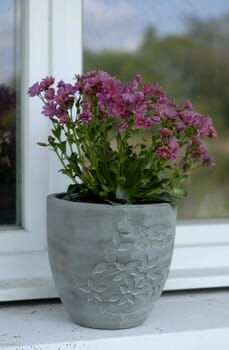
Do you know the Lewisia? No … well me neither until I fell in love with this beautiful rock garden plant in a garden center. Lewisia belongs to the Portulacaceae family, such as purslane which can be eaten in salads or the very rare Claytone from Cuba, which can be eaten raw or cooked.
Léwisia: a jewel plant
Lewisia is therefore a perennial (formerly “fat”) succulent plant native to the mountains of the American West.
It is a stemless plant, that is to say without a stem; its large rosette of evergreen, dark green, elongated and fleshy leaves is inserted directly on the collar.
From this very graphic base stretch delicate floral stems punctuated by a symphony of bouquets of flowers that are reminiscent of those of a plant that somewhat shares the same mountain habitat: houseleek. The color gamut is wide, ranging from white to the most striking red, through salmon hues or more yellow.

Where to grow this succulent plant?
Lewisias are adapted to full sun and drought. They also tolerate harsh winters (hardy down to -20 ° C) very well as long as the soil is perfectly drained. You can set it up in a rock garden without any problem. This will ultimately reproduce its natural habitat.
Do not hesitate to plant the Léwisia in a pot: its low development (20 cm high) is suitable for this. In this way, you will also be able to control the water supply and the drainage of the substrate much better.
Planting Lewisia
To plant or repot Lewisia, mix in a bucket a third of garden soil with a third of compost and a last third of sand. As succulents hate having their feet in water, the sand provides good drainage of the substrate and do not hesitate to put a large thickness of gravel at the bottom of the pot to drain the water very quickly!
What maintenance should be performed on the Lewisia?
After flowering, the plant goes into dormancy. Reduce watering to respect this rest period.
Watch out for slugs, they do horrible damage to fleshy leaves!
If you don’t remove the withered flowers, some fruit will form. The plant will naturally reseed itself, but the young plants that appear the following spring will probably not have the same flower color!
Did you know ?
Lewisia’s name comes from Lewis, an American soldier who discovered this plant in the 19th century while participating in a scientific expedition traveling from the east to the west of the United States.
